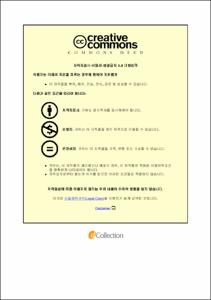On the Performance of Ultraviolet Wireless Communication with Optical Beamforming and Atmospheric Analysis
- Alternative Title
- 광학 빔 포밍 및 대기 분석을 이용한 자외선 무선 통신 성능
- Abstract
- The essence of our present technology back-up has been wireless communication. Conventional radio frequency (RF) technologies have been in use since the days of Marconi. It has been the backbone of communication until today and will continue to do so. However, the problem with RF-based communications is that the spectrum is a limited and scarce resource. Large complicated antenna designs and high transmit power are less impressive in radio-frequency (RF) communication systems. Ultraviolet (UV) attracts much interest in many commercial fields and military applications, because of low cost, low power, and long-distance communication.
Chapter 1 introduces development and explanations about optical wireless communication (OWC). This chapter presents the history of OWC, and then some other wireless communications. OWC is an attractive and alternative scheme compared with conventional RF-based communications because of its light spectrum which supports to solve the demands of high speed and high data rate wireless communication.
A high-speed data rate of wireless communication can be achieved by employing a special dynamic beamforming technique in the UV communication channel, which provides the high data rate performance of a wireless system. The performance of bit error rate (BER) shows that the major motivation of UV channel leads to the future wireless communication system. In addition, the comparison of the proposed localization algorithm against the existing schemes are demonstrated.
Another focus is placed on the performance analysis of a UV wireless communication channel that supports line-of-sight (LOS) and non-line-of-sight (NLOS) with an effective means of data transmission over distance. The main drawback is that the UV communication scheme depends on atmospheric conditions, i.e. atmospheric parameters of the UV channel. In the fourth chapter, the performance analysis relative to those parameters, such as temperature, pressure, and altitude, is presented and then a closed-form expression by a Gamma-Gamma (GG) distribution for turbulence is derived.
LOS and NLOS communications of the UV channel performance are presented in the fifth chapter. The important analysis of user location accuracy and beam transmitting to the desired users are discussed. Moreover, the enhancement of BER compared to other conventional schemes is implemented. Finally, all performance analyses of UV wireless channel on the atmospheric parameters show that the UV channel is strongly dependent upon these parameters.
The conclusion chapter summarizes the performance analysis of beamforming and atmospheric analysis.
- Issued Date
- 2020
- Awarded Date
- 2020. 8
- Type
- Dissertation
- Publisher
- 부경대학교
- Affiliation
- Pukyong National university, Graduate School
- Department
- 대학원 인공지능융합학과
- Advisor
- Yeon Ho Chung
- Table Of Contents
- 1. Introduction 1
1.1 Development of Optical Wireless Communication 2
1.2 Research Motivation and Objectives 5
1.3 Chapter Organization 6
2.Optical Wireless Communications 7
2.1 Introduction 7
2.2 Classification of OWC 8
2.2.1 Visible Light Communication 12
2.2.2 Infrared Communication 14
2.2.3 Free Space Optics 15
2.2.4 Ultraviolet Communication 17
2.2.5 Optical Camera Communication 18
2.3 Summary 22
3.Indoor UV with Optical Beamforming Technique 24
3.1 Introduction 24
3.2 UV Safety Exposure 28
3.3 Proposed Indoor UV Optical Beamforming 31
3.3.1 Localization 36
3.3.2 Beamforming 40
3.3.2.1 Implication of a variations in the transmitter’s height 42
4.Outdoor UV with Atmospheric Turbulence 43
4.1 Introduction 43
4.2 UV link Propagation and Scattering Phenomenon 47
4.3 NLOS UV System Geometry 49
4.4 Simulation Analysis 50
4.4.1 Turbulence Channel 53
4.5 Summary 56
5. Simulation and Results 57
5.1 Performance Results for Indoor UV System 57
5.2 Performance Results for Outdoor UV with Atmospheric Turbulence 66
5.3 Summary 74
6. Conclusions and Future Work 75
6.1 Conclusions 75
6.2 Future Work 76
References 77
List of Publications 93
- Degree
- Master
- Files in This Item:
-
-
Download
 On the Performance of Ultraviolet Wireless Communication with Optical Beamforming and Atmospheric An.pdf
기타 데이터 / 2.71 MB / Adobe PDF
On the Performance of Ultraviolet Wireless Communication with Optical Beamforming and Atmospheric An.pdf
기타 데이터 / 2.71 MB / Adobe PDF
-
Items in Repository are protected by copyright, with all rights reserved, unless otherwise indicated.